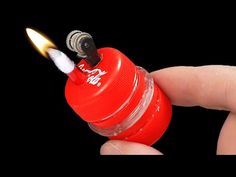3 Ways to Put Lighter Fluid in a Lighter

In the world of lighters, there is a wide variety of options to choose from – from disposable to reusable, gas or fluid-based. For those who prefer the old-school charm of fluid-based lighters, refilling them with lighter fluid is a necessary skill. In this article, we will explore three ways to put lighter fluid in a lighter to ensure you never run out of that vital spark.
1. The Classic Method – Direct Pour
This method is straightforward and suitable for most fluid-based lighters such as Zippo and similar brands.
Step 1: Open the lighter’s fuel chamber by either removing the insert or unscrewing the bottom cap, depending on the lighter’s design. Be sure to keep track of any small parts that may become dislodged.
Step 2: Slowly pour the lighter fluid directly into the fuel chamber, soaking the wick and surrounding cotton or other absorbent material found inside. Take care not to overfill the chamber, as an excess of fluid can cause dangerous flare-ups when ignited.
Step 3: Allow a few moments for the fluid to soak properly into the wick and cotton before closing the lighter or reinserting any components removed earlier. Give your newly-filled lighter a test flick to ensure successful fluid transfer
2. Precision Syringe Refilling
Using a syringe offers greater control when filling your lighter, which helps prevent spills and overfills.
Step 1: As with the classic method, begin by opening your lighter’s fuel chamber and setting aside any removable components.
Step 2: Purchase a small syringe (preferably with a blunt needle) suitable for dispensing liquid. Fill this with your preferred brand of lighter fluid.
Step 3: Insert the needle or syringe tip into your lighter’s fuel chamber, avoiding direct contact with the wick or igniter components. Gently squeeze the syringe to dispense the fluid, being mindful not to overfill the chamber.
Step 4: Reassemble your lighter and test the flame. Syringe filling offers a more precise refilling process and often reduces residual fluid odors.
3. Wick Dipping & Transferring
Although this third method may be messier, it can be handy when direct pouring or syringe filling are not possible.
Step 1: Unwind and remove the wick from your lighter’s fuel chamber, taking care not to damage any components in the process.
Step 2: Submerge the wick into a small container of lighter fluid, soaking it thoroughly for several seconds. Give the wick a gentle squeeze to remove excess fluid before placing it back in the lighter.
Step 3: Reinsert the soaked wick into your lighter’s fuel chamber, ensuring it contacts both the flint wheel and cotton inside. Reassemble your lighter and give it a test flick!
Conclusion
When you own a fluid-based lighter, these three methods will keep your trusty flame source functioning smoothly. Refilling lighters regularly ensures they remain safe and effective. Always use caution when handling flammable materials and never attempt to refill or ignite a damaged or leaking lighter.






